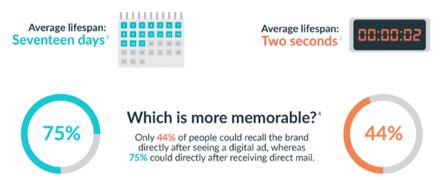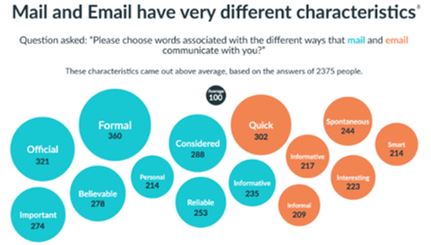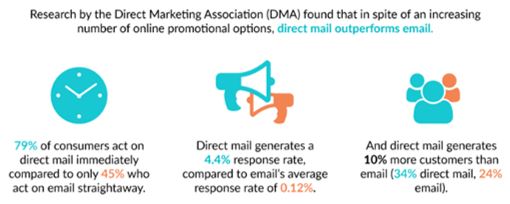Direct Mail vs. Email: You Get What You Pay For
Direct mail vs. email? In a constantly evolving marketing environment, which one really delivers the best bang for your buck? On one hand, dealers tend to feel that “nobody reads mail… they just throw it in the trash.” On the other hand, dealers just can’t get past “how cheap email is… it’s practically free.” The evidence suggests we need to reevaluate the way we use email. Rather than thinking of it as a cheap form of marketing, how we can utilize its strengths? If we continue to bombard customers, we may risk alienating them. Really, the questions you should be asking are, “How do my customers want to be contacted?” and “How often?”
- Today, 70 percent of consumers reportedly feel like they receive too many emails.
- The average lifespan of an email is now just 2 seconds and brand recall directly after seeing a digital ad is just 44 percent, compared to direct mail which has a brand recall of 75.

Credit: Pro Active Marketing
As the effectiveness of email marketing declines, the response to direct mail is on the rise, and printed media becomes a more trusted form of consumer communication.

Credit: Pro Active Marketing
You might be thinking that direct mail doesn’t work with millennials. The truth is, according to the United States Postal Service, 47 percent of millennials actually check their mailbox each day. Not only do young people read their direct mail offers, they actually respond well to direct mail offers. The Data and Marketing Association marks 18–21 years olds’ response rate as 12.4 percent.

Credit: Pro Active Marketing
How often should I mail? It depends.
In all other forms of advertising – newspaper, magazine, television, radio and online – there isn’t a second thought given to spending thousands and even millions of dollars marketing to the same subscribers, viewers, and listeners day after day, and even year after year. Yet, dealers question sending a direct mail campaign twice to the same list. Advertising is primarily about repetition, and direct mail is no exception.
We’re not saying to quit email and put all of your money into mail, but since you’re selling the second biggest ticket item most people will ever purchase, take the time to send a letter, postcard, or custom-printed piece to ask for their business. It just means more.
